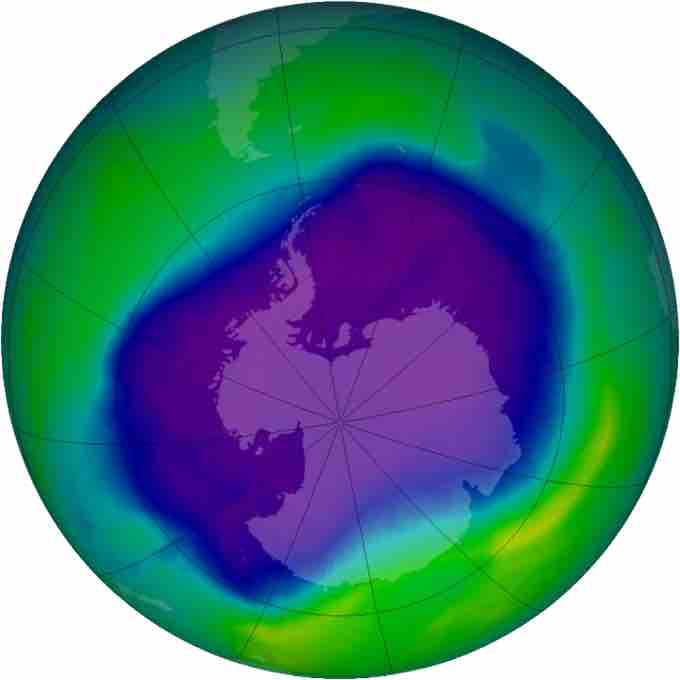The Hole in the Ozone Layer
There is a constant cycle of ozone formation and destruction in the stratospheric layer of the atmosphere. Ultraviolet light splits oxygen gas (O2) to form monatomic oxygen (O) that can react with additional oxygen gas molecules to form ozone (O3). The ozone produced can then go on to react with monatomic oxygen and re-form oxygen gas.
Chlorofluorocarbons (CFCs) are compounds that were commonly used prior to the 1980s for a number of industrial applications, including refrigerants and cleaning solutions. CFCs released at the Earth's surface migrated to the stratosphere, where they interrupted the cycle of ozone generation. Atomic chlorine radicals formed from CFCs (and bromine radicals from bromofluorocarbons, or BFCs) act as catalysts to destroy ozone. The whole process, using CFCl3 as the CFC, is outlined below:
Ultraviolet light breaks a C-Cl bond, resulting in a highly-reactive chlorine radical (Cl
The chlorine breaks an oxygen off from ozone, producing diatomic oxygen. The resulting ClO can also destroy another ozone molecule to form more diatomic oxygen:
Having destroyed two ozone molecules, the chlorine radical is produced once more and can destroy more ozone molecules.
CFCs have caused a gradual decrease in ozone levels throughout the stratosphere. However, air currents have resulted in increased accumulation at the poles, leading to pronounced thinning in these regions during the spring. This thinning is commonly referred to as a hole in the ozone layer, and it allows for harmful ultraviolet radiation to reach the Earth.
Increased UV radiation has been linked to a number of negative health effects, including skin cancer and cataracts. The role of CFCs in the destruction of the ozone layer was determined in 1974, and a number of bans on CFCs were passed in the years that followed; these bans led to a decrease in the size of the holes in the ozone layer.

Ozone depletion
From September 21-30, 2006. The average area of the ozone hole was the largest ever observed, at 10.6 million square miles. There is the least ozone at the blue and purple areas, and the most at the green, yellow, and red areas.